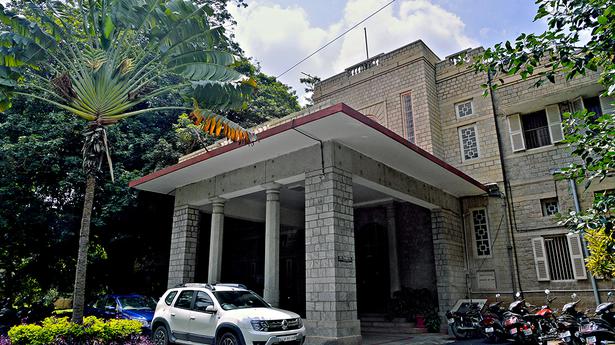
Centralised patient monitoring system at NIMHANS for robust clinical surveillance
The Hindu
Bengaluru
For continuous and real-time monitoring of the vital parameters of patients coming into the Casualty and Emergency Block, NIMHANS has set up a next-gen centralised patient monitoring system.
This monitoring system - set up with support from HCL Foundation, the CSR arm of HCL Technologies – will enable robust clinical surveillance and effective utilisation of healthcare staff at the premier mental health institution.
The cloud-based solution will help monitor patients’ vital signs simultaneously in real time integrating with electronic patient records and medical devices thereby facilitating remote review of patient status and streamlining workflows for the clinical staff.
NIMHANS Deputy Medical Superintendent Aravinda H.R. said vital parameters of patients such as blood pressure, oxygen saturation, ECG, and other probes attached to the patient will be connected to one centralised monitor.
“The centralised system will be continuously monitored by our staff. With this surveillance, we can immediately intervene whenever some warning signs pop up in some patients and they can be immediately attended to,” the doctor explained.
“Deteriorating vitals are an indication that the patient needs immediate attention. Such patients can be attended to immediately,” he said.
NIMHANS director Pratima Murthy said the technology will add great value to clinical care, especially in the dynamic areas of the hospital where large numbers of patients have to be treated concomitantly.

“Writing, in general, is a very solitary process,” says Yauvanika Chopra, Associate Director at The New India Foundation (NIF), which, earlier this year, announced the 12th edition of its NIF Book Fellowships for research and scholarship about Indian history after Independence. While authors, in general, are built for it, it can still get very lonely, says Chopra, pointing out that the fellowship’s community support is as valuable as the monetary benefits it offers. “There is a solid community of NIF fellows, trustees, language experts, jury members, all of whom are incredibly competent,” she says. “They really help make authors feel supported from manuscript to publication, so you never feel like you’re struggling through isolation.”

Several principals of government and private schools in Delhi on Tuesday said the Directorate of Education (DoE) circular from a day earlier, directing schools to conduct classes in ‘hybrid’ mode, had caused confusion regarding day-to-day operations as they did not know how many students would return to school from Wednesday and how would teachers instruct in two modes — online and in person — at once. The DoE circular on Monday had also stated that the option to “exercise online mode of education, wherever available, shall vest with the students and their guardians”. Several schoolteachers also expressed confusion regarding the DoE order. A government schoolteacher said he was unsure of how to cope with the resumption of physical classes, given that the order directing government offices to ensure that 50% of the employees work from home is still in place. On Monday, the Commission for Air Quality Management in the National Capital Region and Adjoining Areas (CAQM) had, on the orders of the Supreme Court, directed schools in Delhi-NCR to shift classes to the hybrid mode, following which the DoE had issued the circular. The court had urged the Centre’s pollution watchdog to consider restarting physical classes due to many students missing out on the mid-day meals and lacking the necessary means to attend classes online. The CAQM had, on November 20, asked schools in Delhi-NCR to shift to the online mode of teaching.









